As a writer gearing up to launch your book, you always need help deciding whether to self-publish or take the traditional route.
Many writers initially dream of securing a traditional publishing deal, a path that historically led to author success.
However, things have changed due to the disruption caused by self-publishing and the surge of eBooks.
Continue reading to uncover the reality behind these book publishing paths, and you’ll soon realize that the truth differs from what many might envision.
So, which is better – self-book publishing or traditional? Let’s delve into the details.
By comparing self-publishing with traditional publishing, you can make an informed decision for your book.
What’s The Difference Between Self-Publishing and Traditional Publishing?
Are you wondering about the gap between self-publishing and traditional publishing?
Well, here’s what you need to know, and it boils down to one crucial factor:
If you, as the author, hold the rights and royalties, congrats, you’ve self-published.
On the flip side, if the publishing company calls the shots on rights and royalties, you’re on the route of traditional publishing.
And that’s the crux of it.
Everything else you hear is just commentary circling this one fundamental distinction.
So, next time, you ponder which is better, self-book publishing or traditional. Remember, it all hinges on whom you want to claim those rights and royalties.
Let’s find out which way is better for whom.
Who Should Opt for Self-Publishing and Who Should Go for Traditional Publishing?
If you want to be more transparent about what you should hop on the wagon, here’s a breakdown of who you should consider which way:
If you’re a big shot, like,
And traditional publisher waves like a $500k+ advance at you, then go for it, grab it without a second thought.
You’re in the minority that should almost certainly go traditional.
If your traditional deal offers less than $500k, it gets tricky.
That’s likely to be the 2% category, and it’s a more nuanced decision covered here.
On the flip side, for the rest of us:
Why self-publish? Simple.
Without a hefty advance from a major publisher, the perks of self-publishing far outweigh any downsides.
If you’re not in the celebrity-CEO-writer elite, self-publishing is likely your winning play.
Keep reading if we’re likely to make it easier for you to decide which is better- self-book publishing or traditional.
Benefits Of Traditional Publishing and Self-Publishing:
Benefits Of Traditional Publishing |
Benefits Of Self Publishing |
| Financial Ease: Traditional publishers often cover production costs, alleviating financial burden on authors. | Speedy Publishing: Self-publishing allows authors to release their work quickly without lengthy submission processes. |
| Bypassing Gatekeepers: Authors can bypass the traditional publishing gatekeepers like agents and editors. | Prestigious Awards: Self-published authors can still qualify for prestigious literary awards, gaining recognition for their work. |
| Mainstream Exposure: Traditional publishers have connections to mainstream media and bookstores, enhancing exposure. | Royalties: Authors retain a larger portion of their book sales revenue compared to traditional publishing contracts. |
Benefits Of Self-Publishing
Let’s first dive into the perks of being a self-published author – it’s like having the keys to the production kingdom.
1. Bypassing Gatekeepers:
Traditional publishing involves jumping through hoops – finding an agent, convincing a publisher through them, and competing with a sea of other dreamers. Self-publishing? No hoops. No one can say “no.”
2. Speedy Publishing:
With traditional publishing, you’re in for a waiting game. Teams of pros handling your book sounds great, but it means loads of emails and a wait of over a year before you see your work in print.
Self-publishing cuts the red tape. Your timeline depends on you and the professionals you hire.
Simple communication,
Efficient progress,
And the sooner you’re done, the sooner you publish.
3. Royalties:
Traditional publishers offer 5-20% of your book’s sale price after deducting the advance.
Self-published authors? Grab 50-70% royalties.
You do more work and will be paid more – fair and square.
4. Rights Ownership:
When a big publisher buys your manuscript, they snag a bunch of rights,
First to publish,
Other formats,
Foreign rights, you name it.
Self-publish your work, and these rights stay yours.
You can sell them later and earn more from your hard work.
5. Creative Control:
Traditional publishing means juggling opinions from various pros. You might get little say on technical stuff like the cover or marketing.
Self-publishing puts you in the driver’s seat.
Work with experts,
Listen to expert’s feedback,
And lastly, your vision gets realized – from content to cover.
Benefits of Traditional Publishing
Now, let’s flip the coin and check out the perks of traditional publishing.
1. Financial Ease:
Traditional publishing takes care of the financial nitty-gritty—no need to pay for editing, designing, or marketing. The publisher handles it, and they pay you in advance.
If someone asks you to pay, beware – probably a vanity press.
2. Mainstream Exposure:
Traditional publishing can shine a bigger spotlight, thanks to budget and connections. It’s effective for a broader audience.
Targeted marketing can be as powerful as mainstream exposure if you’re in a niche.
3. Prestigious Awards:
Big awards often elude self-published works. Traditional publishing opens the door to these prestigious accolades.
However, there are noteworthy indie prizes and platforms like Amazon’s Best Seller list that carry weight with readers.
When it comes down to it, the choice depends on what matters most for your book and your goals.
Let’s now check out what the stats say.
Stats Backing up Self-Publishing:
Let’s dive into some facts about self-publishing, and the numbers speak volumes:
1. Stats telling Market Growth:
The global publishing market is chugging along at 1% growth per year.
In contrast, the self-publishing market is sprinting with a whopping 17% annual growth rate.
2. E-book Market:
About 30-34% of all eBooks hitting the digital shelves are proudly self-published.
3. Stats about Book Sales:
A staggering 300 million self-published books find happy readers each year.
These books collectively rake in a cool $1.25 billion in sales annually.
4. Self-publishing platform’s Impact:
Amazon, a self-publishing powerhouse, pays independent authors an impressive $520 million in royalties yearly.
5. About the Success Stories:
Over 1,000 self-published authors hit the $100,000 mark in Amazon earnings last year.
Lastly,
Traditional publishing brought smiles to 1,200 authors, pocketing $25,000 or more each year.
And,
The self-publishing squad had an impressive 1,600 authors joining the $25,000+ club annually.
So, bookbiz is competitive whether you go the traditional book or indie route.
Nonetheless, when you nail it right, it’s not just about creating a memorable read for your audience but building a source of joy and passive income for authors.
When deciding on the most crucial part, i.e., which is better- self-book publishing or traditional? It would be best to consider both drawbacks so you can be more precise in your decision. We’ve gathered informative data on this topic for you.
Read below,
Drawbacks Of Both Traditional and Self-Publishing:
Breaking down the drawbacks of both traditional and self-publishing:
Cons for Traditional Publishing: |
Cons for Self-Publishing: |
| It’s All Out of Your Hands:While it’s a pro and a con, traditional publishing means relinquishing control over your book. The final look, pricing, and marketing are decisions mostly beyond your influence. | You Must Format the Book Entirely on Your Own: Self-publishing requires you to wear the writer and designer hats or hire professionals for formatting, editing, and cover design. |
| You Need to Hire a Literary Agent: Landing an agent is tough. They’re your gateway to publishers, but securing one comes with challenges and a 15% cut from your advance and royalties. | You Must Secure Distribution: Getting your book into bookstores and libraries is on you. It’s a challenging task that demands time and resilience in the face of rejection. |
| It Can Take a Long Time: Traditional publishing is a marathon, not a sprint. The process, from conception to publishing, often stretches over a year, if not more. | Competition and Lots of It: The low entry barrier for self-publishing means a flooded market. Standing out becomes a considerable challenge, requiring significant effort to grab readers’ attention. |
| Your Book Subject May Not Be in Demand: If your genre isn’t trendy, traditional publishers might not find you as appealing. Niche publishers may be an option, but the market could be smaller. | You Are Your Own Marketing Department: Your book’s success hinges on your marketing skills. Establishing an online presence, engaging on social media, and active participation in writing communities are vital. It’s a crash course in marketing your work. |
| You Get a Smaller Royalty: While everyone celebrates the advance, the actual percentage of royalties is lower in traditional publishing (around 10% for hardback, 8% for paperback) due to printing and distribution costs. | It’s Harder to Get Reviewed: Reviews are crucial, but self-published authors need to seek them out actively. Unlike traditional publishing, where it’s taken care of, you’re on your own. Seeking independent reviews through platforms like Kirkus Reviews or engaging with niche bloggers becomes essential. |
Examples Of Successful Self-Published Authors
Now that we’ve explored the advantages of self-publishing let’s draw inspiration from the success stories of remarkable self-published authors who carved their path to a successful journey:
1. Jasmine Patel
Jasmine Patel soared to success with her fantasy series, captivating readers with each installment. By self-publishing, she independently sold over a million copies, showcasing the vast potential for reaching a broad audience.
2. Ethan Clarke
Ethan Clarke‘s science fiction epic, “Beyond Horizons,” quickly gained popularity in self-publishing. His ability to engage readers set a standard for success among independent authors, proving that gripping storytelling knows no bounds.
3. Mia Rodriguez
Mia Rodriguez’s heartwarming novel, initially shared chapter by chapter on her blog, became a sensation when she chose self-publishing. The touching narrative resonated with readers, propelling Rodriguez into the spotlight.
4. Omar Khan
With his thrilling espionage series, Omar Khan carved a distinctive place in the self-publishing landscape. The intricate plots and compelling characters led to sales exceeding 4 million copies, establishing him as a force in independent genre fiction.
5. Serena Carter
Serena Carter’s gripping psychological thrillers, including “Shattered Trust” and “Vanishing Shadows,” exemplify self-publishing success. Her debut novel topped Amazon Kindle charts and paved the way for a series of bestselling titles.
6. Jordan Lewis
Jordan Lewis, recognized for his mystery series featuring detective Alex Turner, became a prominent figure in self-publishing. His books captured the attention of hundreds of thousands of readers independently, and Lewis is lauded for sharing valuable insights on the self-publishing business.
These authors stand as testaments to the immense potential and impact achievable through self-publishing.
Ask These Seven Questions to Yourself to Be Clearer About Choosing Your Path:
Ask yourself these seven questions yourself; answering these will make your route even more straightforward to know which is better, self-book publishing or the traditional route.
1. Do You Envision Your Book for a Broad Audience or a Specialized Niche?
Traditional publishing suits work with mass appeal. If your book is niche or deeply personal, self-publishing might align better with your goals.
2. How Much Influence Are You Willing to Share in the Publishing Process?
Collaboration is inherent in traditional publishing, bringing experienced professionals into the mix. Self-publishing offers full autonomy, letting every decision be yours.
Answer yourself: are you eager for collaboration or set on steering the ship solo?
3. Does the Validation of a Publisher Matter to You?
While names like Penguin Random House still carry prestige, consider if this matters. Gauge how much validation from a traditional publisher means compared to directly connecting with readers.
4. Is Having Your Book in Bookstores and Libraries a Priority?
Traditional publishers hold a distribution edge, ensuring your book’s presence in physical stores. If having a tangible presence is essential, traditional publishing could be a strong contender.
5. What's Your Comfort Level with Marketing and Self-Promotion?
Both paths demand marketing efforts. Traditional publishers offer some support, but with self-publishing, it’s a solo journey. Assess your marketing skills and willingness to champion your work.
6. Can You Invest Financial Resources in Your Book?
Traditional publishing is less cost-prohibitive, while self-publishing may involve editing, cover design, and more expenses. Consider your budget and readiness for potential costs.
7. How Patient Are You in Seeing Your Book Come to Life?
Traditional publishing takes time, from querying agents to book release. If patience isn’t your strongest suit and you desire quicker results, self-publishing provides almost instant availability.
Making The Final Decision:
After pondering these questions, if your path becomes more apparent, fantastic.
If not, dip your toes in the traditional publishing waters with queries and adapt based on responses.
Remember, the current era is more about getting flexibility, ensuring each book has its chance to find its readers.
If you’re thinking about publishing your book independently, don’t rush into it.
Consider taking a similar approach to traditional publishing.
If you plan for print an eBook, be meticulous about paper weight and color for print, and pay attention to details like font size and page layout for both formats.
Seek advice when needed.
Additionally, leverage social media and have a marketing plan ready before your book hits the shelves.
Conclusion:
After spilling all the information right in front of you and tapping into the details of both, as you scroll away, we like to add one more point so you can make a wise decision next time you ponder over which is better- self-book publishing or traditional?
Ultimately, the decision between traditional and self-publishing depends on your willingness to put in the effort to make your book successful, your skills beyond writing, your network, your target audience, and your reasons for publishing.

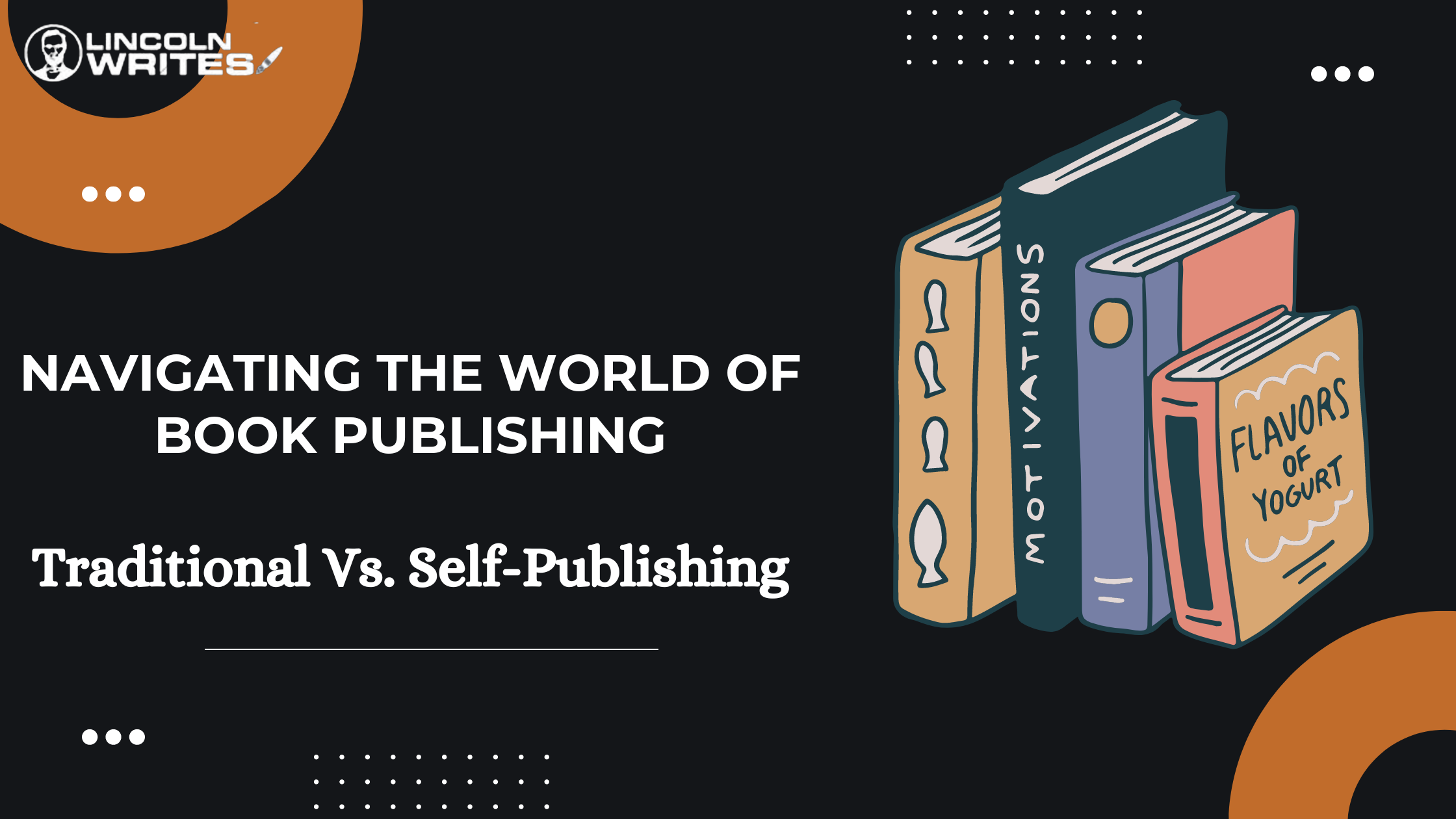
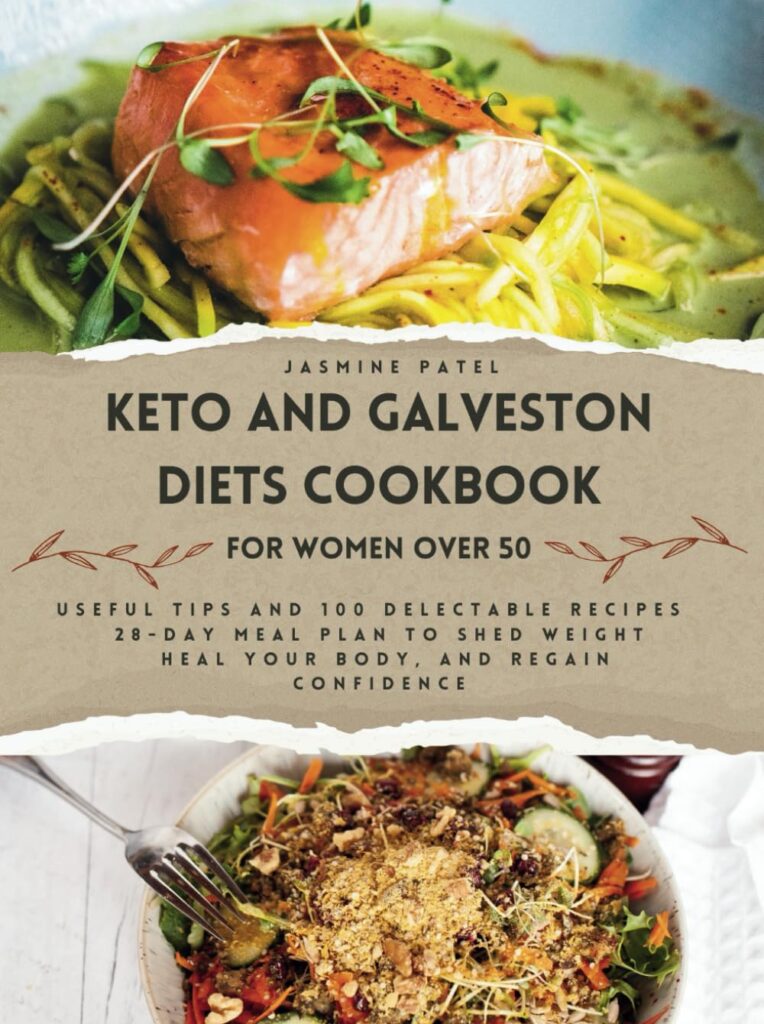

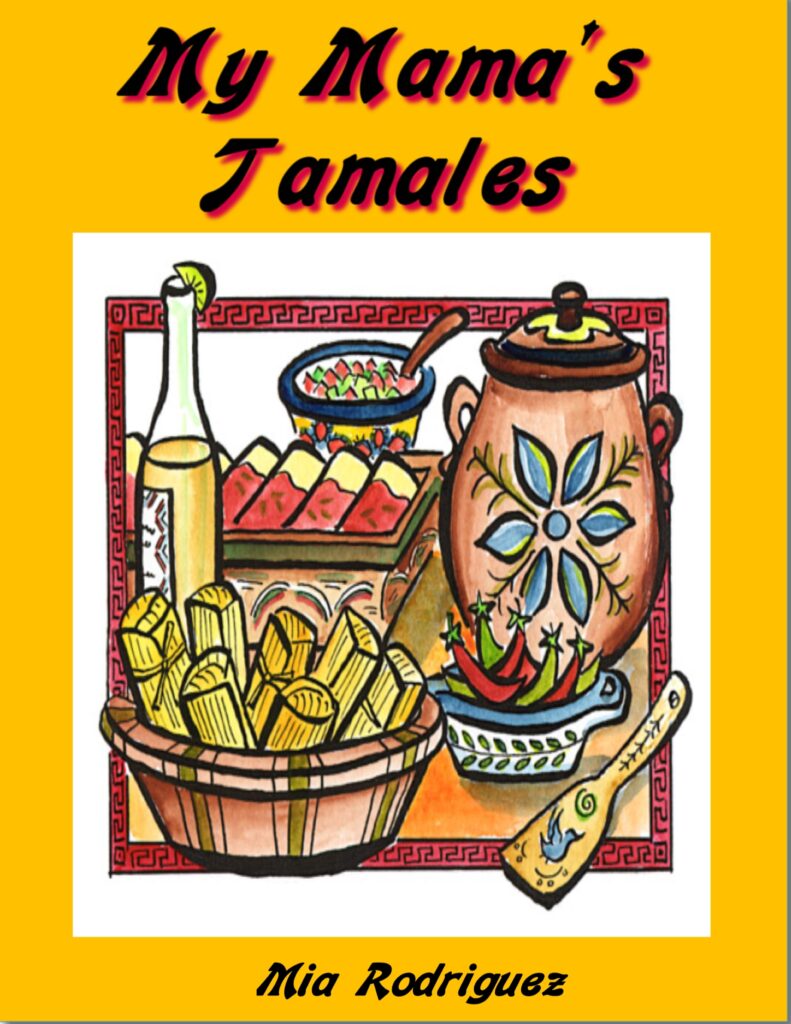
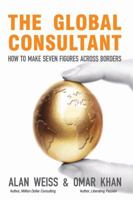
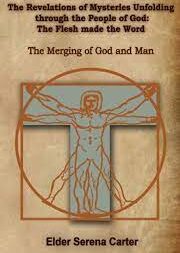
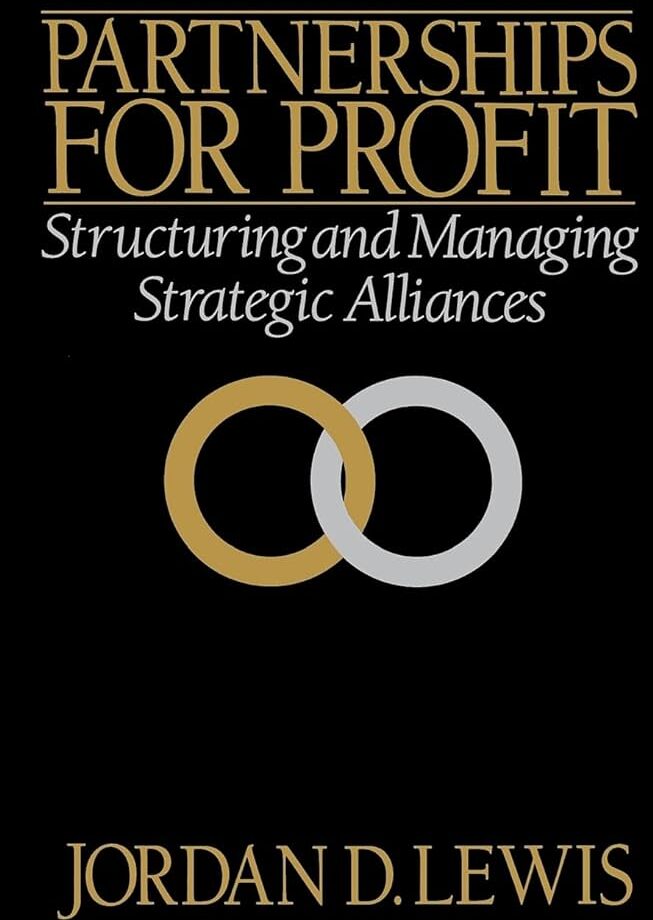
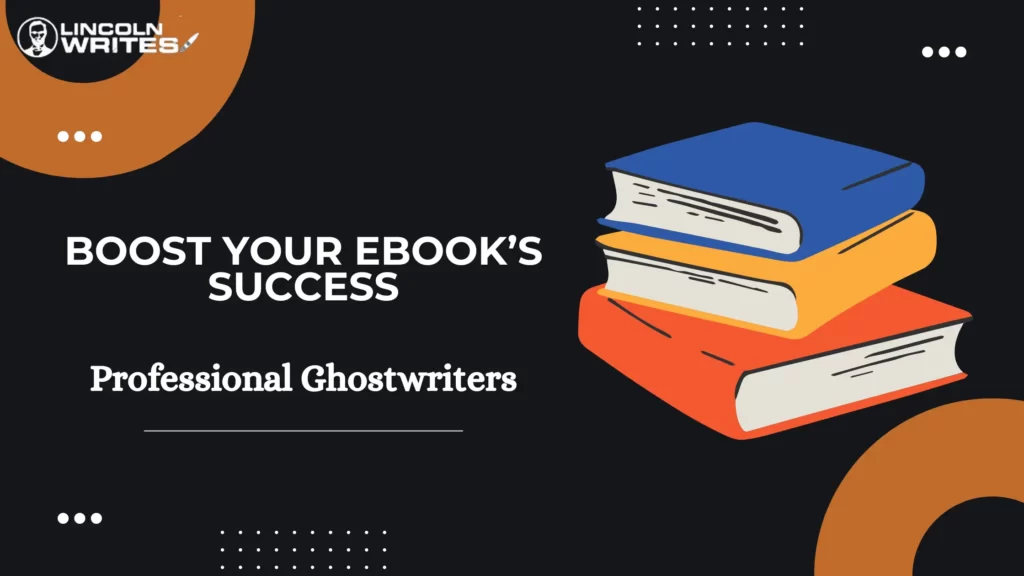
For the reason that the admin of this website is working, no doubt very quickly it will be famous,
due to its quality contents.
Also visit my page :: vpn coupon code 2024
It’s remarkable for me to have a web site, which is useful designed for my knowledge.
thanks admin
My web blog; vpn special coupon code 2024
Hello there! Quick question that’s entirely off
topic. Do you know how to make your site mobile friendly?
My weblog looks weird when browsing from my apple iphone.
I’m trying to find a theme or plugin that might be able facebook vs eharmony to find love online
correct this problem. If you have any suggestions, please share.
With thanks!
Hey there! I’ve been following your website for a while now and finally got the bravery to go ahead and
give you a shout out from Huffman Texas! Just wanted to say keep up
the good work!
Stop by my web page … eharmony special coupon code
Hi there! Do you use Twitter? I’d like to follow
you if that would be ok. I’m absolutely enjoying your blog and look forward to new updates.
My homepage … nordvpn special coupon code 2024
Official website of Dragon Pharma.
I don’t think the title of your article matches the content lol. Just kidding, mainly because I had some doubts after reading the article.
Thanks for sharing. I read many of your blog posts, cool, your blog is very good.
Your blog is a goldmine of information.
Thanks for sharing. I read many of your blog posts, cool, your blog is very good. https://accounts.binance.com/en-ZA/register?ref=JHQQKNKN
Your point of view caught my eye and was very interesting. Thanks. I have a question for you.
static balancing machines
Understanding Static Balancing Machines
The concept of balancing is essential to ensure the smooth operation of various rotating machinery. Among the techniques available, static balancing machines play a crucial role. These machines are specifically designed to correct static imbalances in rotors, which can lead to excessive vibrations and premature failure of the equipment. In understanding static balancing machines, it is vital to differentiate between static and dynamic balancing processes, their applications, and methodologies.
What is Static Balancing?
Static balancing refers to the condition where an object, usually a rotor, is at rest, and its center of gravity does not align with the axis of rotation. When a rotor is statically unbalanced, the heavier part always tries to fall to the lowest point due to gravity. This imbalance must be corrected to prevent any potential damage or dysfunction within the rotating equipment. Static balancing ensures that the rotor’s center of gravity coincides with its rotation axis, eliminating the tendency to shift under gravitational influence.
Applications of Static Balancing Machines
Static balancing machines are widely utilized in industries that involve the manufacturing or maintenance of rotating components such as fans, rotors, pulleys, and flywheels. These machines are crucial in settings where precision balancing helps prolong the lifespan of machinery and enhances operational efficiency. For instance, in the automotive and aerospace industries, ensuring that rotors are correctly balanced can significantly reduce wear and extend service intervals.
How Static Balancing Machines Work
Static balancing machines operate by measuring the vibrations produced by a rotor while it is stationary. The process begins with the rotor mounted within the machine, where sensors detect any imbalances. Typically, the rotor is rotated to identify the heavier side, and weights are added or removed at specific points along the object’s diameter to achieve equilibrium.
Balancing Procedure
The balancing procedure using static balancing machines generally follows the steps outlined below:
Initial Setup: The rotor is placed on the machine and secured to ensure stability.
Measurement: Vibration sensors are calibrated and connected to identify the center of gravity and detect any imbalance.
Weight Adjustment: Additional weights may be affixed at predetermined points on the rotor to counteract the identified imbalances. These corrective weights are calculated based on the rotor’s specifications, including mass and size.
Final Testing: After adjustments, the rotor is once again measured to confirm that vibrations have been reduced to acceptable levels, indicating successful balancing.
Benefits of Using Static Balancing Machines
Utilizing static balancing machines offers several advantages:
Extended Equipment Lifespan: By minimizing vibrations, these machines help reduce wear and tear on rotating components, ultimately extending their operational life.
Improved Performance: Properly balanced machinery operates more efficiently, which can lead to savings in energy consumption and improved output.
Enhanced Safety: Reducing imbalances prevents unexpected failures that could pose safety risks to operators and equipment.
Cost Savings: Investing in static balancing helps avoid costly repairs and downtime due to equipment malfunction.
Static versus Dynamic Balancing
While static balancing focuses on correcting an imbalance when the rotor is stationary, dynamic balancing addresses imbalances when the rotor is in motion. Dynamic balancing is necessary for more complex rotors with imbalances distributed across different planes, commonly seen in multi-part machines. Both processes are crucial for ensuring that machinery runs smoothly, but understanding the specific requirements and appropriate applications for static balancing machines is key to effective maintenance practices.
Conclusion
In summary, static balancing machines are vital tools in ensuring the efficient operation of rotating machinery by correcting static imbalances. Their straightforward operation enhances the longevity and reliability of various industrial equipment, leading to improved performance and safety. By understanding the functioning and benefits of static balancing, industries can better maintain their machinery, resulting in significant cost and time savings. Emphasizing the importance of balancing in mechanical performance can ultimately lead to more reliable and effective industrial operations.
I don’t think the title of your article matches the content lol. Just kidding, mainly because I had some doubts after reading the article.
Can you be more specific about the content of your article? After reading it, I still have some doubts. Hope you can help me.
Can you be more specific about the content of your article? After reading it, I still have some doubts. Hope you can help me.
Can you be more specific about the content of your article? After reading it, I still have some doubts. Hope you can help me.
I don’t think the title of your article matches the content lol. Just kidding, mainly because I had some doubts after reading the article.
I don’t think the title of your article matches the content lol. Just kidding, mainly because I had some doubts after reading the article.
Your point of view caught my eye and was very interesting. Thanks. I have a question for you.
I don’t think the title of your article matches the content lol. Just kidding, mainly because I had some doubts after reading the article.
Your point of view caught my eye and was very interesting. Thanks. I have a question for you.
Thanks for sharing. I read many of your blog posts, cool, your blog is very good.
Thank you for your sharing. I am worried that I lack creative ideas. It is your article that makes me full of hope. Thank you. But, I have a question, can you help me?
Can you be more specific about the content of your article? After reading it, I still have some doubts. Hope you can help me.
Thanks for sharing. I read many of your blog posts, cool, your blog is very good.
Thank you for your sharing. I am worried that I lack creative ideas. It is your article that makes me full of hope. Thank you. But, I have a question, can you help me?
Your point of view caught my eye and was very interesting. Thanks. I have a question for you.
Can you be more specific about the content of your article? After reading it, I still have some doubts. Hope you can help me.
I don’t think the title of your article matches the content lol. Just kidding, mainly because I had some doubts after reading the article.
Thank you for your sharing. I am worried that I lack creative ideas. It is your article that makes me full of hope. Thank you. But, I have a question, can you help me?
Thanks for sharing. I read many of your blog posts, cool, your blog is very good.
They always offer alternatives and suggestions.
lisinopril for sleep
A trailblazer in international pharmacy practices.
Offering a global touch with every service.
clomid generic
The staff always remembers my name; it feels personal.
Their vaccination services are quick and easy.
where can i get cytotec tablets
A pharmacy that truly understands international needs.
Their free health check-ups are a wonderful initiative.
can i order cheap lisinopril prices
Their free health check-ups are a wonderful initiative.
They never compromise on quality.
cipro no prescription
Cautions.
789alo: alo 789 – alo789in
order medicines online india: buying prescription drugs from india – IndiaMedFast.com
mexican pharmacy online order Mexican Pharm Inter reliable mexican pharmacies
https://mexicanpharminter.com/# reliable mexican pharmacies
canadian pharmacy victoza
https://mexicanpharminter.com/# reliable mexican pharmacies
mexican pharmacy online store: mexican drug stores online – mexican pharmacy online store
http://indiamedfast.com/# lowest prescription prices online india
canadian pharmacy 24 com
mexican pharmacy online: mexican pharmacy online – Mexican Pharm Inter
mexican pharmacy online store mexican pharmacy online order buying from online mexican pharmacy
https://indiamedfast.com/# order medicines online india
MexicanPharmInter: mexican drug stores online – mexican drug stores online
https://interpharmonline.com/# northwest canadian pharmacy
canadian drug pharmacy
order medicines online india: cheapest online pharmacy india – India Med Fast
https://mexicanpharminter.com/# mexican pharmacy online
https://interpharmonline.com/# canadian pharmacy 24h com
online canadian pharmacy reviews
Mexican Pharm Inter: MexicanPharmInter – mexican pharmacy online
cheapest online pharmacy india lowest prescription prices online india IndiaMedFast
mexican pharmacy online: buying from online mexican pharmacy – Mexican Pharm Inter
http://indiamedfast.com/# online pharmacy india
https://interpharmonline.shop/# ordering drugs from canada
ordering drugs from canada
IndiaMedFast: india pharmacy without prescription – cheapest online pharmacy india
https://interpharmonline.com/# canada online pharmacy
thecanadianpharmacy: InterPharmOnline.com – canadian pharmacy uk delivery
cheapest online pharmacy india cheapest online pharmacy india cheapest online pharmacy india
https://mexicanpharminter.com/# buying from online mexican pharmacy
medication canadian pharmacy
https://mexicanpharminter.shop/# MexicanPharmInter
https://mexicanpharminter.com/# buying from online mexican pharmacy
canadian pharmacy 24h com safe
canadianpharmacymeds com: highest rated canadian online pharmacy – best rated canadian pharmacy
http://indiamedfast.com/# lowest prescription prices online india
Mexican Pharm International: buying from online mexican pharmacy – mexican drug stores online
https://mexicanpharminter.shop/# mexican pharmacy online
canadian drugs online
https://kamagrakopen.pro/# kamagra jelly kopen
Kamagra Kopen Online: KamagraKopen.pro – KamagraKopen.pro
https://tadalafileasybuy.shop/# cialis without a doctor prescription
Kamagra Kopen Online: Kamagra Kopen – Kamagra
Tadalafil Easy Buy Buy Cialis online Buy Tadalafil 10mg
https://tadalafileasybuy.com/# cialis without a doctor prescription
over the counter sildenafil: order viagra – Generic100mgEasy
http://generic100mgeasy.com/# Viagra Tablet price
Generic Tadalafil 20mg price: cialis without a doctor prescription – TadalafilEasyBuy.com
https://kamagrakopen.pro/# Kamagra
https://kamagrakopen.pro/# kamagra 100mg kopen
Tadalafil Easy Buy: cialis without a doctor prescription – TadalafilEasyBuy.com
Cheap generic Viagra online buy generic 100mg viagra online Cheap Sildenafil 100mg
cialis without a doctor prescription: cialis without a doctor prescription – TadalafilEasyBuy.com
https://kamagrakopen.pro/# Officiele Kamagra van Nederland
https://tadalafileasybuy.shop/# Tadalafil Easy Buy
Tadalafil Easy Buy: п»їcialis generic – TadalafilEasyBuy.com
cialis without a doctor prescription: cialis without a doctor prescription – Tadalafil price
https://kamagrakopen.pro/# kamagra gel kopen
Generic 100mg Easy Generic100mgEasy Generic 100mg Easy
https://kamagrakopen.pro/# kamagra kopen nederland
buy generic 100mg viagra online: Generic 100mg Easy – Generic100mgEasy
sildenafil 50 mg price: Generic100mgEasy – Generic100mgEasy
http://generic100mgeasy.com/# Generic100mgEasy
kamagra 100mg kopen: kamagra kopen nederland – KamagraKopen.pro
https://generic100mgeasy.shop/# Generic100mgEasy
buy Viagra online: Generic 100mg Easy – Cheapest Sildenafil online
kamagra kopen nederland kamagra jelly kopen Officiele Kamagra van Nederland
http://tadalafileasybuy.com/# Tadalafil Easy Buy
Generic100mgEasy: Generic100mgEasy – Generic100mgEasy
https://kamagrakopen.pro/# kamagra 100mg kopen
over the counter sildenafil: Generic100mgEasy – Generic100mgEasy
kamagra kopen nederland: KamagraKopen.pro – Officiele Kamagra van Nederland
https://kamagrakopen.pro/# Kamagra Kopen
http://tadalafileasybuy.com/# Buy Cialis online
Kamagra Kopen kamagra kopen nederland KamagraKopen.pro
Generic100mgEasy: buy generic 100mg viagra online – Generic 100mg Easy
https://kamagrakopen.pro/# kamagra jelly kopen
cialis without a doctor prescription: Tadalafil Easy Buy – cialis without a doctor prescription
https://generic100mgeasy.com/# Generic100mgEasy
https://tadalafileasybuy.com/# Cialis 20mg price
Cialis without a doctor prescription: Tadalafil Easy Buy – cialis without a doctor prescription
Generic 100mg Easy: Generic 100mg Easy – Generic100mgEasy
https://generic100mgeasy.com/# Generic100mgEasy
Generic 100mg Easy Generic100mgEasy buy generic 100mg viagra online
https://generic100mgeasy.com/# Generic 100mg Easy
kamagra 100mg kopen: KamagraKopen.pro – kamagra 100mg kopen
Generic Cialis price: cialis without a doctor prescription – cialis without a doctor prescription
https://tadalafileasybuy.shop/# cialis without a doctor prescription
пинап казино – пин ап
пин ап вход – pinup 2025
cialis without a doctor prescription TadalafilEasyBuy.com cialis without a doctor prescription
пин ап казино зеркало – пин ап зеркало
пин ап – пин ап зеркало
пин ап зеркало: https://pinupkz.life/
пин ап – пин ап казино
пин ап казино зеркало: https://pinupkz.life/
пин ап зеркало – пин ап казино официальный сайт
kamagra gel kopen kamagra pillen kopen Officiele Kamagra van Nederland
пин ап казино официальный сайт – пин ап казино зеркало
пин ап вход – пин ап казино зеркало
pinup 2025: https://pinupkz.life/
пин ап казино – пин ап
cialis without a doctor prescription cialis without a doctor prescription Cialis 20mg price
pinup 2025 – пин ап казино зеркало
пин ап казино официальный сайт: https://pinupkz.life/
пин ап казино – пин ап
Kamagra Kopen Online kamagra pillen kopen Kamagra Kopen
пин ап казино зеркало: https://pinupkz.life/
пин ап казино зеркало – пин ап вход
пин ап казино – pinup 2025
apotek pa nett: Apotek hemleverans idag – apotek online
apotek online recept Apotek hemleverans idag apotek pa nett
Betrouwbare online apotheek zonder recept: de online drogist kortingscode – Apotheek Max
http://apotheekmax.com/# Betrouwbare online apotheek zonder recept
https://apotheekmax.shop/# Beste online drogist
Apoteket online: Apotek hemleverans recept – apotek pa nett
apotek online: apotek pa nett – Apotek hemleverans recept
http://apotheekmax.com/# Betrouwbare online apotheek zonder recept
https://kamagrapotenzmittel.shop/# kamagra
Beste online drogist de online drogist kortingscode Beste online drogist
Apotek hemleverans recept: Apotek hemleverans idag – Apotek hemleverans recept
https://kamagrapotenzmittel.com/# Kamagra kaufen ohne Rezept
https://apotekonlinerecept.com/# Apotek hemleverans idag
Online apotheek Nederland zonder recept: Online apotheek Nederland zonder recept – Apotheek Max
https://apotheekmax.shop/# Apotheek Max
Apotek hemleverans idag: Apotek hemleverans idag – apotek online
ApotheekMax online apotheek Betrouwbare online apotheek zonder recept
https://apotekonlinerecept.com/# apotek online
Kamagra online bestellen: Kamagra kaufen ohne Rezept – Kamagra Gel
https://kamagrapotenzmittel.com/# Kamagra Oral Jelly
Kamagra Original Kamagra online bestellen Kamagra kaufen
Apoteket online: Apotek hemleverans idag – apotek online recept
de online drogist kortingscode: Apotheek Max – Beste online drogist
https://kamagrapotenzmittel.shop/# Kamagra Oral Jelly kaufen
http://kamagrapotenzmittel.com/# Kamagra online bestellen
https://kamagrapotenzmittel.shop/# Kamagra Original
Apotek hemleverans recept: apotek pa nett – Apotek hemleverans recept
Kamagra Gel: Kamagra online bestellen – Kamagra Oral Jelly kaufen
Kamagra kaufen ohne Rezept Kamagra online bestellen Kamagra kaufen ohne Rezept
https://kamagrapotenzmittel.com/# Kamagra kaufen
Apotheek Max: Betrouwbare online apotheek zonder recept – Online apotheek Nederland met recept
http://kamagrapotenzmittel.com/# Kamagra Oral Jelly
https://apotekonlinerecept.com/# Apotek hemleverans recept
Kamagra Original: Kamagra Original – Kamagra Oral Jelly
Kamagra online bestellen: Kamagra Gel – Kamagra Oral Jelly
Apoteket online Apotek hemleverans recept Apotek hemleverans recept
https://apotekonlinerecept.com/# Apotek hemleverans recept
https://kamagrapotenzmittel.shop/# Kamagra kaufen
http://kamagrapotenzmittel.com/# Kamagra Original
kamagra: Kamagra kaufen ohne Rezept – Kamagra Gel
apotek online recept: apotek pa nett – apotek online recept
http://apotekonlinerecept.com/# Apotek hemleverans recept
Beste online drogist online apotheek Beste online drogist
online apotheek: Betrouwbare online apotheek zonder recept – Online apotheek Nederland zonder recept
ApotheekMax: de online drogist kortingscode – Apotheek online bestellen
https://kamagrapotenzmittel.com/# Kamagra kaufen ohne Rezept
is canadian pharmacy legit: canada ed drugs – canadian pharmacy king
india pharmacy: cheapest online pharmacy india – www india pharm
https://wwwindiapharm.shop/# www india pharm
purple pharmacy mexico price list Agb Mexico Pharm Agb Mexico Pharm
Agb Mexico Pharm: Agb Mexico Pharm – buying prescription drugs in mexico online
best canadian pharmacy online: go canada pharm – best rated canadian pharmacy
best online pharmacies in mexico: mexico pharmacies prescription drugs – п»їbest mexican online pharmacies
http://agbmexicopharm.com/# Agb Mexico Pharm
top 10 pharmacies in india: www india pharm – online pharmacy india
www india pharm: www india pharm – indian pharmacies safe
best canadian online pharmacy reviews GoCanadaPharm canadian pharmacy king reviews
Online medicine order: buy prescription drugs from india – best india pharmacy
http://wwwindiapharm.com/# www india pharm
pharmacy website india: www india pharm – www india pharm
Agb Mexico Pharm: best online pharmacies in mexico – Agb Mexico Pharm
mexican drugstore online: Agb Mexico Pharm – Agb Mexico Pharm
https://agbmexicopharm.shop/# medicine in mexico pharmacies
online pharmacy india: cheapest online pharmacy india – top 10 online pharmacy in india
www india pharm: www india pharm – www india pharm
buy medicines online in india www india pharm india online pharmacy
top online pharmacy india: www india pharm – world pharmacy india
Online medicine order: india pharmacy mail order – Online medicine order
http://gocanadapharm.com/# canadian pharmacy online reviews
www india pharm: www india pharm – pharmacy website india
pharmacies in mexico that ship to usa: Agb Mexico Pharm – pharmacies in mexico that ship to usa
online shopping pharmacy india: reputable indian online pharmacy – www india pharm
top online pharmacy india top online pharmacy india www india pharm
https://agbmexicopharm.com/# mexican pharmaceuticals online
medicine in mexico pharmacies: Agb Mexico Pharm – medicine in mexico pharmacies
buying from online mexican pharmacy: Agb Mexico Pharm – Agb Mexico Pharm
Your article helped me a lot, is there any more related content? Thanks!
www india pharm: indian pharmacies safe – Online medicine order
pharmacy in canada: pharmacy canadian – buy drugs from canada
http://wwwindiapharm.com/# best india pharmacy
cheapest online pharmacy india: india online pharmacy – www india pharm
canada cloud pharmacy go canada pharm canadian pharmacy in canada
canadian pharmacy ed medications: GoCanadaPharm – canada drugstore pharmacy rx
Agb Mexico Pharm: Agb Mexico Pharm – Agb Mexico Pharm
http://agbmexicopharm.com/# medication from mexico pharmacy
world pharmacy india: www india pharm – www india pharm
mexican online pharmacies prescription drugs: buying prescription drugs in mexico – mexico drug stores pharmacies
canadapharmacyonline: canada drug pharmacy – vipps canadian pharmacy
mexican mail order pharmacies Agb Mexico Pharm Agb Mexico Pharm
http://gocanadapharm.com/# canadian pharmacy phone number
www india pharm: www india pharm – top online pharmacy india
reputable mexican pharmacies online: Agb Mexico Pharm – mexico drug stores pharmacies
medicine in mexico pharmacies: purple pharmacy mexico price list – Agb Mexico Pharm
canadian pharmacy world: canadian online drugs – onlinepharmaciescanada com
http://lisinexpress.com/# lisinopril 25 mg price
lisinopril tabs 10mg buy lisinopril 20 mg without a prescription lisinopril canada
prednisone purchase canada: prednisone 10mg tablet price – Pred Pharm Net
ZithPharmOnline: ZithPharmOnline – ZithPharmOnline
amoxicillin discount coupon: generic amoxicillin 500mg – amoxil pharmacy
http://clomfastpharm.com/# can you get clomid without a prescription
Lisin Express: Lisin Express – zestril medication
AmOnlinePharm: AmOnlinePharm – AmOnlinePharm
AmOnlinePharm: AmOnlinePharm – amoxicillin 250 mg capsule
ZithPharmOnline average cost of generic zithromax ZithPharmOnline
http://clomfastpharm.com/# Clom Fast Pharm
AmOnlinePharm: amoxicillin 500mg prescription – AmOnlinePharm
lisinopril 1.25 mg: lisinopril 2.5 cost – Lisin Express
zithromax over the counter: ZithPharmOnline – zithromax 500mg price in india
http://lisinexpress.com/# ordering lisinopril without a prescription
Lisin Express: lisinopril rx coupon – zestril 25 mg
Lisin Express: rx lisinopril – price of zestril 30 mg
AmOnlinePharm: amoxicillin buy online canada – AmOnlinePharm
buying clomid pills cost of clomid prices Clom Fast Pharm
http://zithpharmonline.com/# ZithPharmOnline
lisinopril cost canada: Lisin Express – Lisin Express
ZithPharmOnline: buy zithromax online – zithromax 1000 mg online
Lisin Express: Lisin Express – buy prinivil online
zithromax 500mg over the counter: zithromax 500 – generic zithromax medicine
http://clomfastpharm.com/# can i get cheap clomid now
cheapest lisinopril 10 mg Lisin Express Lisin Express
Clom Fast Pharm: Clom Fast Pharm – Clom Fast Pharm
ZithPharmOnline: ZithPharmOnline – zithromax 500 mg
Pred Pharm Net: Pred Pharm Net – Pred Pharm Net
https://clomfastpharm.shop/# Clom Fast Pharm
can i buy amoxicillin over the counter in australia: amoxicillin pills 500 mg – where to buy amoxicillin pharmacy
zithromax 250mg: ZithPharmOnline – zithromax capsules
Clom Fast Pharm: Clom Fast Pharm – Clom Fast Pharm
50 mg prednisone canada pharmacy prednisone tablet 100 mg Pred Pharm Net
http://amonlinepharm.com/# over the counter amoxicillin canada
Lisin Express: zestril price – Lisin Express
Lisin Express: lisinopril 20 mg buy – Lisin Express
Clom Fast Pharm: cost cheap clomid price – can you get clomid without prescription
Clom Fast Pharm: Clom Fast Pharm – can i get generic clomid pill
https://lisinexpress.shop/# Lisin Express
AmOnlinePharm: AmOnlinePharm – AmOnlinePharm
amoxicillin 825 mg amoxicillin discount AmOnlinePharm
amoxicillin 500mg buy online canada: buy amoxicillin online cheap – AmOnlinePharm
zithromax buy online no prescription: ZithPharmOnline – ZithPharmOnline
https://predpharmnet.shop/# how much is prednisone 5mg
Clom Fast Pharm: how to get clomid without rx – Clom Fast Pharm
lisinopril 10 mg daily: Lisin Express – Lisin Express
cost cheap clomid: Clom Fast Pharm – where buy cheap clomid no prescription
https://casibom1st.com/# oyun siteleri
free spin casino: casibom guncel giris – betnoo casibom1st.com
slot casino siteleri: casino siteleri – slot casino siteleri casinositeleri1st.com
deneme bonusu veren siteler yasal Еџans oyunlarД± siteleri bonus veren siteler casinositeleri1st.shop
sweet bonanza slot: sweet bonanza 1st – sweet bonanza slot sweetbonanza1st.shop
casino siteleri: slot casino siteleri – casino siteleri 2025 casinositeleri1st.com
guvenilir casino siteleri: casino siteleri 2025 – casino siteleri 2025 casinositeleri1st.com
https://casinositeleri1st.shop/# slot casino siteleri
slot casino siteleri guvenilir casino siteleri gerçek paralı casino oyunları casinositeleri1st.shop
casД±no: casibom guncel adres – en iyi iddaa sitesi casibom1st.com
guvenilir casino siteleri: casino siteleri 2025 – guvenilir casino siteleri casinositeleri1st.com
sweet bonanza: sweet bonanza yorumlar – sweet bonanza sweetbonanza1st.shop
sweet bonanza: sweet bonanza siteleri – sweet bonanza siteleri sweetbonanza1st.shop
guvenilir casino siteleri: deneme bonusu veren siteler – casino siteleri 2025 casinositeleri1st.com
guvenilir casino siteleri: lisansl? casino siteleri – casino site casinositeleri1st.com
glГјcksspiel internet casibom guncel adres jav siteleri casibom1st.shop
oyun inceleme siteleri: casibom guncel giris – en iyi casino sitesi casibom1st.com
slot casino siteleri: slot casino siteleri – deneme bonusu veren siteler casinositeleri1st.com
welches online casino: lisansl? casino siteleri – slot casino siteleri casinositeleri1st.com
gerГ§ek paralД± casino oyunlarД±: casibom resmi – yasal casino siteleri casibom1st.com
casino turkey: casibom giris – para kazandiran kumar oyunlarД± casibom1st.com
sweet bonanza demo sweet bonanza 1st sweet bonanza yorumlar sweetbonanza1st.com
sweet bonanza oyna: sweet bonanza oyna – sweet bonanza slot sweetbonanza1st.shop
gГјzel siteler: casibom mobil giris – deneme bonusu veren siteler yorumlar casibom1st.com
https://casibom1st.shop/# en iyi casino sitesi
deneme bonusu veren yeni siteler 2025: casibom – oyun s casibom1st.com
slot casino siteleri: vidobet – casino bonanza gГјncel giriЕџ casinositeleri1st.com
casino siteleri 2025: casino siteleri 2025 – lisansl? casino siteleri casinositeleri1st.com
canlД± +18: deneme bonusu veren siteler – lisansl? casino siteleri casinositeleri1st.com
guvenilir casino siteleri slot casino siteleri lisansl? casino siteleri casinositeleri1st.shop
sweet bonanza oyna: sweet bonanza 1st – sweet bonanza 1st sweetbonanza1st.shop
sweet bonanza siteleri: sweet bonanza demo – sweet bonanza 1st sweetbonanza1st.shop
sweet bonanza: sweet bonanza giris – sweet bonanza demo sweetbonanza1st.shop
sweet bonanza slot: sweet bonanza yorumlar – sweet bonanza demo sweetbonanza1st.shop
2025 yatД±rД±m ЕџartsД±z deneme bonusu veren siteler: casibom resmi – yeni deneme bonusu veren siteler 2025 casibom1st.com
casino siteleri guvenilir casino siteleri slot casino siteleri casinositeleri1st.shop
http://casinositeleri1st.com/# casino siteleri 2025
sweet bonanza demo: sweet bonanza oyna – sweet bonanza giris sweetbonanza1st.shop
en iyi casino oyunlarД±: casibom – bet casino casibom1st.com
tГјm casino siteleri: casibom guncel adres – en yeni kaГ§ak bahis siteleri casibom1st.com
sweet bonanza yorumlar: sweet bonanza oyna – sweet bonanza yorumlar sweetbonanza1st.shop
canlД± casino deneme bonusu veren siteler: casibom giris – yatД±rД±m bonusu veren siteler casibom1st.com
deneme bonusu veren siteler deneme bonusu veren siteler deneme bonusu veren siteler casinositeleri1st.shop
http://sweetbonanza1st.com/# sweet bonanza siteleri
sweet bonanza: sweet bonanza demo – sweet bonanza 1st sweetbonanza1st.shop
USMexPharm: UsMex Pharm – Us Mex Pharm
certified Mexican pharmacy: UsMex Pharm – USMexPharm
UsMex Pharm: Us Mex Pharm – UsMex Pharm
https://usmexpharm.com/# USMexPharm
USMexPharm: certified Mexican pharmacy – UsMex Pharm
UsMex Pharm mexican pharmacy USMexPharm
buying from online mexican pharmacy: certified Mexican pharmacy – mexican pharmacy
mexican pharmacy: mexican drugstore online – Us Mex Pharm
https://usmexpharm.shop/# mexican pharmacy
USMexPharm: reputable mexican pharmacies online – mexican pharmacy
Us Mex Pharm: mexican pharmacy – mexican pharmacy
certified Mexican pharmacy UsMex Pharm certified Mexican pharmacy
usa mexico pharmacy: mexico drug stores pharmacies – mexican pharmaceuticals online
mexican online pharmacies prescription drugs: mexican pharmaceuticals online – USMexPharm
https://usmexpharm.com/# mexican pharmacy
Mexican pharmacy ship to USA: USMexPharm – Mexican pharmacy ship to USA
Us Mex Pharm: Us Mex Pharm – Us Mex Pharm
UsMex Pharm: Us Mex Pharm – Us Mex Pharm
https://usmexpharm.com/# USMexPharm
mexican pharmacy certified Mexican pharmacy mexican rx online
USMexPharm: mexican pharmacy – mexican pharmacy
certified Mexican pharmacy: mexico pharmacies prescription drugs – Mexican pharmacy ship to USA
Mexican pharmacy ship to USA: usa mexico pharmacy – usa mexico pharmacy
https://usmexpharm.com/# mexican mail order pharmacies
USMexPharm: usa mexico pharmacy – mexican border pharmacies shipping to usa
buying prescription drugs in mexico: usa mexico pharmacy – usa mexico pharmacy
UsMex Pharm: medicine in mexico pharmacies – certified Mexican pharmacy
UsMex Pharm: Us Mex Pharm – UsMex Pharm
https://usmexpharm.com/# USMexPharm
mexican border pharmacies shipping to usa UsMex Pharm mexican pharmacy
certified Mexican pharmacy: mexican pharmacy – mexico pharmacies prescription drugs
mexican pharmacy: Mexican pharmacy ship to USA – Mexican pharmacy ship to USA
certified Mexican pharmacy: UsMex Pharm – usa mexico pharmacy
http://usmexpharm.com/# mexican border pharmacies shipping to usa
USA India Pharm: USA India Pharm – UsaIndiaPharm
UsaIndiaPharm [url=https://usaindiapharm.com/#]UsaIndiaPharm[/url] USA India Pharm
india pharmacy: reputable indian pharmacies – UsaIndiaPharm
indianpharmacy com: USA India Pharm – indian pharmacy paypal
https://usaindiapharm.com/# USA India Pharm
UsaIndiaPharm: UsaIndiaPharm – Online medicine home delivery
п»їlegitimate online pharmacies india: UsaIndiaPharm – UsaIndiaPharm
UsaIndiaPharm: USA India Pharm – USA India Pharm
https://usaindiapharm.com/# USA India Pharm
best india pharmacy: UsaIndiaPharm – USA India Pharm
UsaIndiaPharm best online pharmacy india world pharmacy india
best india pharmacy: UsaIndiaPharm – USA India Pharm
indian pharmacy paypal: USA India Pharm – world pharmacy india
USA India Pharm: india pharmacy mail order – indian pharmacy online
https://usaindiapharm.com/# buy prescription drugs from india
best india pharmacy: india pharmacy mail order – USA India Pharm
mail order pharmacy india: indian pharmacy – UsaIndiaPharm
online shopping pharmacy india: reputable indian pharmacies – UsaIndiaPharm
https://usaindiapharm.com/# top 10 pharmacies in india
USA India Pharm USA India Pharm UsaIndiaPharm
indian pharmacy paypal: UsaIndiaPharm – top 10 online pharmacy in india
Thanks for sharing. I read many of your blog posts, cool, your blog is very good.
reputable indian pharmacies: UsaIndiaPharm – cheapest online pharmacy india
Online medicine home delivery: USA India Pharm – USA India Pharm
https://usaindiapharm.com/# USA India Pharm
india online pharmacy: pharmacy website india – Online medicine order
UsaIndiaPharm Online medicine order top 10 online pharmacy in india
USA India Pharm: Online medicine home delivery – USA India Pharm
https://usaindiapharm.com/# world pharmacy india
USA India Pharm: india online pharmacy – USA India Pharm
indian pharmacies safe: indian pharmacy – USA India Pharm
reputable indian online pharmacy: india online pharmacy – cheapest online pharmacy india
http://usaindiapharm.com/# USA India Pharm
USA India Pharm: UsaIndiaPharm – online shopping pharmacy india
Online medicine order: india pharmacy – indian pharmacy
Online medicine order: USA India Pharm – indian pharmacies safe
http://usaindiapharm.com/# top 10 online pharmacy in india
USA India Pharm: online shopping pharmacy india – UsaIndiaPharm
Your article helped me a lot, is there any more related content? Thanks!
USA India Pharm: best online pharmacy india – top 10 pharmacies in india
USA India Pharm: world pharmacy india – USA India Pharm
https://usaindiapharm.com/# indian pharmacies safe
USA India Pharm USA India Pharm indian pharmacy online
online pharmacy india: world pharmacy india – world pharmacy india
Online medicine order: Online medicine home delivery – UsaIndiaPharm
online pharmacy india: indianpharmacy com – USA India Pharm
USA India Pharm: UsaIndiaPharm – USA India Pharm
http://usaindiapharm.com/# indian pharmacy paypal
Online medicine home delivery: UsaIndiaPharm – UsaIndiaPharm
п»їlegitimate online pharmacies india USA India Pharm indian pharmacy paypal
best online pharmacy india: UsaIndiaPharm – pharmacy website india
USA India Pharm: USA India Pharm – USA India Pharm
http://usaindiapharm.com/# USA India Pharm
USA India Pharm: UsaIndiaPharm – mail order pharmacy india
UsaIndiaPharm: USA India Pharm – USA India Pharm
canada drugs online: best rated canadian pharmacy – USACanadaPharm
buy canadian drugs pharmacies in canada that ship to the us canadian pharmacy ed medications
https://usacanadapharm.com/# usa canada pharm
canadian pharmacy tampa: canadian pharmacy antibiotics – usa canada pharm
canadian pharmacy: USACanadaPharm – USACanadaPharm
http://usacanadapharm.com/# canadian pharmacy
usa canada pharm: USACanadaPharm – safe canadian pharmacy
USACanadaPharm canadian pharmacy oxycodone usa canada pharm
usa canada pharm: usa canada pharm – canadian pharmacy reviews
canada pharmacy 24h: canada pharmacy online legit – USACanadaPharm
http://usacanadapharm.com/# usa canada pharm
USACanadaPharm: canadian pharmacy antibiotics – usa canada pharm
USACanadaPharm: usa canada pharm – usa canada pharm
http://usacanadapharm.com/# onlinepharmaciescanada com
legal canadian pharmacy online USACanadaPharm canadadrugpharmacy com
usa canada pharm: best canadian online pharmacy – my canadian pharmacy
canadian pharmacy cheap: USACanadaPharm – canadian pharmacy near me
canadian neighbor pharmacy: recommended canadian pharmacies – usa canada pharm
https://usacanadapharm.com/# canadian valley pharmacy
USACanadaPharm: usa canada pharm – canadian pharmacy ed medications
canadian world pharmacy: canada pharmacy 24h – thecanadianpharmacy
USACanadaPharm USACanadaPharm usa canada pharm
https://usacanadapharm.com/# USACanadaPharm
usa canada pharm: USACanadaPharm – best canadian pharmacy
USACanadaPharm: canadian pharmacy antibiotics – USACanadaPharm
https://usacanadapharm.com/# usa canada pharm
escrow pharmacy canada https://usacanadapharm.com/# USACanadaPharm
canadian online drugs
USACanadaPharm USACanadaPharm usa canada pharm
usa canada pharm: canadian 24 hour pharmacy – USACanadaPharm
usa canada pharm: USACanadaPharm – reliable canadian online pharmacy
https://usacanadapharm.shop/# USACanadaPharm